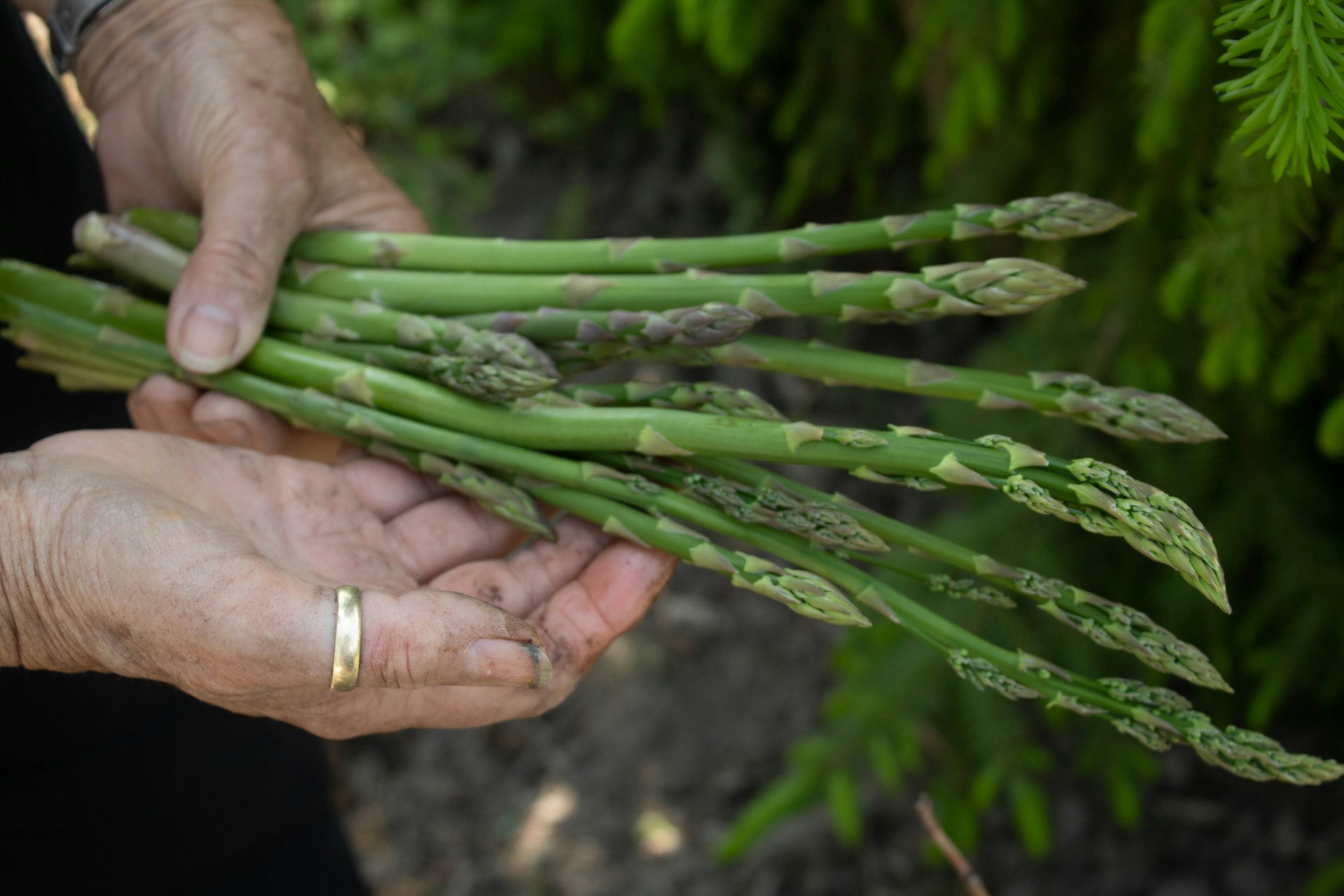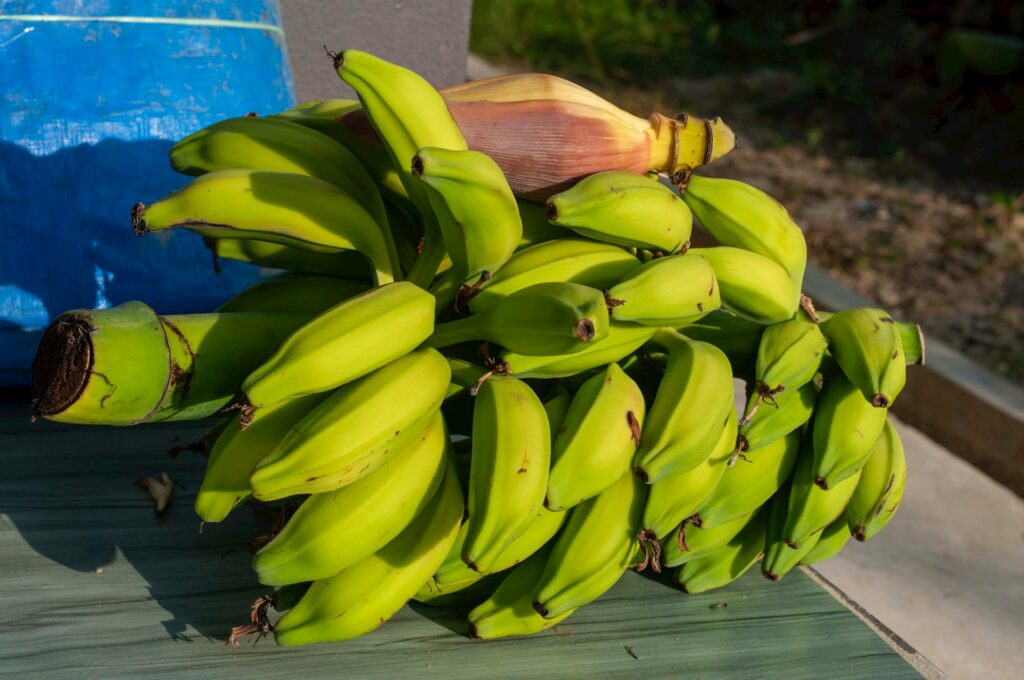
Asparagus is a nutritious vegetable that provides an array of health benefits, thanks to its rich content of vitamins, minerals, fiber, and antioxidants. A member of the lily family, it is a seasonal vegetable often associated with the freshness of spring and a favorite among health-conscious consumers. Recognizing whether asparagus has gone bad is crucial to ensure one receives its full nutritional value and avoids food waste.
Determining the freshness of asparagus involves looking for signs like unpleasant odor, discoloration, and a slimy texture. The tips of the asparagus are usually the first to deteriorate, so paying close attention to their condition can be a good indicator of quality. Moreover, understanding the proper storage methods and the expected shelf life helps maintain its freshness and flavor for as long as possible.
Key Takeaways
- Checking for odor, discoloration, and texture helps identify spoiled asparagus.
- The condition of asparagus tips often indicates overall freshness.
- Proper storage extends asparagus’s edible shelf life and preserves its nutritional value.
Identifying Bad Asparagus
When inspecting asparagus for freshness, it’s essential to observe its appearance, texture, and scent.
Visual Signs of Spoilage
Asparagus should display a bright green color with possibly some white or purple at the ends. A visual inspection will quickly show signs of bad asparagus:
- Color: If the vibrant green has faded or turned to a yellowish hue, this indicates age or spoilage.
- Dark Spots/Mold: Presence of dark spots or mold, particularly at the tips, is a clear sign of decay.
- Tips: Fresh asparagus tips should be closed and compact. If they are starting to spread or display a mushy texture, the vegetable is no longer fresh.
Texture and Firmness
The texture of asparagus provides significant clues about its freshness:
- Firm vs. Limp: Gently bend a stalk. Fresh asparagus will be firm and snap easily, while bad asparagus will be limp and bend without breaking.
- Wrinkled/Mushy: A wrinkly or mushy stalk indicates the asparagus is either dehydrated or has started to rot.
- Slimy Surface: If the surface of the stalk feels slimy, this is a sign of bacterial growth, and the asparagus should not be consumed.
Smell and Taste
Asparagus should have a mild, earthy smell, and any deviation can signal spoilage:
- Odor: A sour or unpleasant smell is a strong indicator that the asparagus is no longer good to eat.
- Taste Test: If the smell is not overtly off-putting, a small taste can help determine freshness. Spoiled food often has a bad taste, and if the asparagus tastes off, it should be discarded.
Proper Storage and Shelf Life
Proper storage can maximize the asparagus’s shelf life, while improper handling may lead to early spoilage. Ensuring vegetables are stored under the right conditions is key to maintaining freshness and edibility.
Refrigeration and Freezing
Storing in the Refrigerator:
To refrigerate asparagus, one must keep it in the crisper drawer of the refrigerator. Wrapping the ends with a damp paper towel or placing the stalks upright in a mason jar with fresh water can help maintain freshness. Asparagus should be stored in an airtight container or a plastic bag to prevent the absorption of strong odors. Typically, refrigerated asparagus maintains quality for up to 4-5 days.
- Shelf Life in Refrigerator: 4-5 days
Freezing Asparagus:
For long-term storage, freezing is a viable option. To freeze asparagus, first blanch the stalks in boiling water for a few minutes, then transfer them to an ice bath to halt the cooking process. After drying the stalks, one can place them in airtight freezer bags or containers. When properly frozen, asparagus can last for up to 8 months.
- Shelf Life when Frozen: Up to 8 months
Alternative Storage Methods
Short-Term Alternatives:
If immediate refrigeration or freezing isn’t possible, storing asparagus in a cool, dark place can serve as a temporary measure. Asparagus will generally last for up to two days when kept at room temperature. However, for optimal freshness, asparagus should be refrigerated or frozen as soon as possible.
Long-Term Solutions:
Freezing asparagus is the preferred long-term storage method, but canning is another option. When canning, it is essential to follow proper sterilization processes and seal asparagus in airtight, vacuum-sealed containers. Canned asparagus can have a shelf life of several years but may have a different texture compared to fresh or frozen.
- Optimal Refrigeration: Crisper drawer of the refrigerator
- Best Freezing Practice: Blanch, cool, dry, and use airtight packaging
- Alternative: Use mason jar with water for countertop storage (short-term)
Maximizing Freshness and Flavor
To ensure maximum freshness and flavor of asparagus, focus on proper selection, preparation, and cooking methods. These key aspects contribute significantly to the taste and quality of the final dish.
Selecting and Preparing Asparagus
Selecting the right asparagus is the first step toward a flavorsome experience. One should look for firm stalks with bright green or purplish tips, which indicate freshness and that they are in season. The ends should be moist and not dried out. Avoid stalks that are limp or have wrinkled skin, as these are signs of age and potential loss of flavor.
When preparing asparagus, one must rinse them under cold water to remove any dirt. It’s important to trim off the tough, woody ends before cooking. Raw asparagus can be enjoyed in salads, providing a crisp texture and a slightly grassy flavor that is both succulent and refreshing.
Enhancing Asparagus Dishes
Cooking methods greatly affect the taste and nutritional benefits of asparagus. Blanching asparagus by briefly submerging it in boiling water and then plunging it into ice water helps to maintain its bright color, crispness, and enhances digestion-friendliness.
If one desires to cook asparagus further, there are various asparagus recipes that highlight its delicate flavor. Baking with a sprinkle of lemon juice can bring out a subtle, delicious taste, while retaining the nutritional benefits of the vegetable. Whether it’s a specific asparagus recipe or a personal creation, adhering to these cooking processes ensures that the asparagus retains its succulence and flavor, resulting in a deliciously prepared dish.




